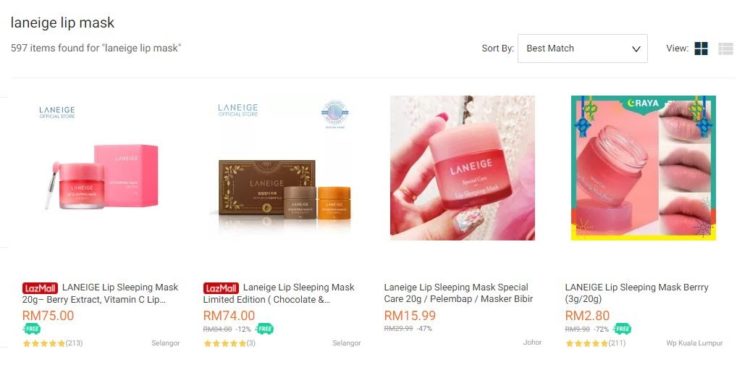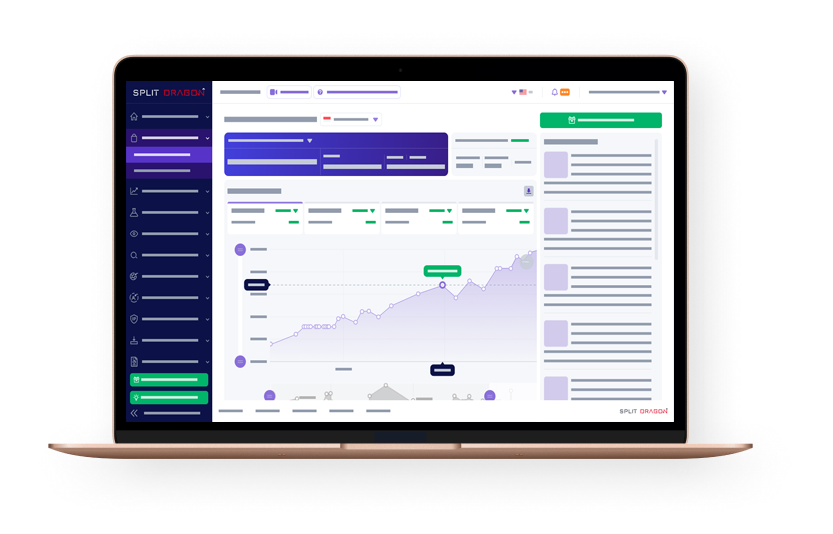If you’re thinking of entering the world of eCommerce now, go ahead! It remains to be one of the most profitable businesses and solves a big problem when it comes to convenience and logistics concerns by buyers. However, before you enter, note that the eCommerce market has been here for a while — so it is only natural that you would have competition, quite a few actually.
Currently, Shopee of Sea Ltd. is the leading online marketplace in Southeast Asia with 343 million visits per month (and growing as it expands to South America). It’s followed by Lazada of Alibaba with 100 million active users.[*]
If you are new to the online retail space, you’d want to leverage Shopee and Lazada’s established payment and logistics infrastructure. Like right now.
If you have already ventured into online eCommerce, let me tell you one thing:
The multi-vendor marketplace platform is a whole different level.
Buyers have thousands of options ranging from popular categories like Electronics and Fashion to rare items like high-valued plants and quirky products.

Truth is, competition is very tight between the sellers.
On top of that, the marketplace needs to market its own business as well. Thus, they have various policies to ensure the balance between the marketplace and the sellers.
This means that competition is cutthroat, requiring a different approach to successfully sell on these platforms.
But worry less as we show you the common mistakes you can avoid when starting selling on Lazada and Shopee.
1. Not participating in marketplace campaigns
Who’s selling doesn’t really matter in marketplaces. The only things that stand out are the products and the marketplace itself.
As a brand, how do you ride on with this?
Lazada, Shopee, and almost every multi-vendor have campaigns and promos to boost their presence in the region.
They are equipped with various tools like promotions, engagement strategies, and other marketing tools to help sellers maximize sales using their platforms.
Here are the most successful campaigns of Lazada and Shopee:
Lazada
- Flexi Combo – This is a “Buy More, Save More” promotional tool where sellers can set different tiers of discounts or give gifts/samples when the customer meets the criteria being set by the seller.
- Promo Bundles – This tool has 4 kinds:
- Quantity: Buy X same items, get Y discount for each item
- Buy 1 Get 1 Free: Buy X same items, get 1 same item for free
- Combo: buy 1 x main product with Y% off, get 1 of the combo products with Z% off
- Free Gift: Buy 1 main product with Y% off, get 1 gift
- Seller Voucher – a tool that allows sellers to create self-funded vouchers to drive sales to their stores.
Shopee
- Shopee Live – Shopee allows you to host engagement activities and give away reward coins.
- Bump – Also known as “Boost”, this function lets you improve your product search ranking temporarily to increase the number of views and potential sales.
- My Shop’s Flash Deals – This is a flash sale promotion tool on Seller Center that helps you attract buyers with limited-time offers on your shop’s products.
- Shopee Flash Deal – this is a popular promotional event that offers attractive deals exclusively available for a limited time.
Not to mention the big sale day like 11.11 where orders skyrocket because of big discounts and free shipping vouchers.
Another thing to point out is that Marketplaces are very good at making ordinary days into a “sale” day with their constant promotions.
And yes, it changes almost every day.
Get the most of these promotions by setting up a dedicated team that will focus on determining which product or items are best suited for specific promotions and developing a solid inventory strategy to keep your products moving.
2. Ignoring seller centers
Seller centres help your sales team make informed decisions, strategize better and run your store efficiently.
The biggest seller centers of Lazada and Shopee are Lazada University and Shopee Seller Education Hub.
These two platforms will give your sales team all the knowledge and skills to improve your marketing in their respective platforms.
They also conduct webinars, livestreams and publish courses that teach various marketplace skills. Lazada and Shopee also use their seller centers to introduce new policies and latest features.
3. Bland or copy-pasted product descriptions and images on all platforms
One of our services here in Split Dragon is making your product description, images and lorikeet optimized, complete and compelling.
Being creative when it comes to creating titles and product descriptions will help your products stand out from the competition.
Take a look at this example below.

Here’s the product description of the top result:

Now let’s check the description of the same product but with cheaper price.

The product that landed on number 1 is the one that has a complete, well-thought product description. Despite being more expensive, it has more buyers and reviews compared to the cheaper one.
Take note that multi-vendor marketplaces are looming with fake products. Having clear photos and a good product description is the only shot to positively influence and give your potential buyer confidence to buy from your store.
Takeaway: Sellers who list their products with complete and compelling descriptions usually appear on the top listings in their category.
Also, don’t be careless. Any incorrect information on your description can have its consequences. One might think that it is OK to add less precise information and that it will not affect your shop because no one is going to police your descriptions.
That’s a huge misconception and it will backfire in your store rating. The best thing to do is to hire professional copywriters to ensure optimized and high quality product descriptions.
Remember: Optimized product description increases your ranking on search result pages, plus it will convey authority and confidence to your target market. This will reflect on your product reviews too!
Speaking about product reviews, here’s the next common mistake you should watch out for.
4. Undervaluing the review system
Good reviews are a necessity in this part of eCommerce. 72% of consumers turn to reviews before making a purchase, while 92% of them read reviews to determine the quality of the shop.[*]
Typically, there are 3 types of reviews you can see on online marketplaces.
- Commend your product
- To warn others about your product
- To give feedback about their buying experience
Lazada, for example, introduced the honeycomb, a metric that boosts new products depending on various facets, including store power. Store power measures your response rate and reviews. A high rating of good review means you have a higher store power.
This also means that good customer review means higher rankings on search results.
It’s also important to note that products with wrong data and defects may go undetected by the marketplace, but not the customer.
Remember, a product with a false claim may help you get noticed but in a negative way as far as shoppers are concerned.
5. Not engaging with customers
Southeast Asia online marketplaces have evolved from just a multi-vendor platform to a more socialized channel where sellers and buyers interact.
In fact, in Shopee, buyers can negotiate the price with the sellers. It’s another way for the sellers to engage their customers.
Live Streaming is also a huge trend that catapulted Shopee to become the number multi-vendor eCommerce platform in Southeast Asia.
Through customer engagement, you can gather valuable insights and have a better understanding of your client base. You can use these insights to effectively promote your items.
Another way to engage buyers and woo potential customers is to train your customer service team on how to respond to complaints.
Responding to complaints is another way to engage with your buyers and woo potential buyers.
Here are quick tricks to turn that bad review into a marketing win:
- Respond quickly. As soon as you see that searing 1 star and bad comment, apologize and sympathize with the customer.
- Acknowledge the problem. When responding to a bad review, you are not just talking to that 1 buyer, you are also talking to other potential buyers.
- Insert a little marketing. Explain to the customer what the usual transaction is. That way the complainant will feel that what happened is out of the norm. Ex: “We meticulously check the products before shipping them out and we regret that we might have missed something in your order.”
- Bring the conversation out of the public eye. It is easier to resolve when you discuss the problem privately. Good thing, Lazada, and Shopee allow you to communicate to the buyer in the chat section.
- Go the extra mile. Make sure that you are doing everything you can to make the transaction smooth and hassle-free. You can include a freebie or a voucher to keep the buyer happy.
After resolving the issue, the best thing you could hope for is for the customer to update their first review and give you a 4-star rating.
6. Not using applications/tools
Savvy brands and established retailers already know how to navigate their way to stand out in these crowded platforms. Also, as marketplaces evolve, so are the little tasks to complete such as choosing products for promos, managing the costs, fulfillment processes and the list goes on.
In short, the practice of just uploading your list on the marketplace is long gone.
That said, there are already several third-party tool providers that help sellers improve their selling experience.
There are also eCommerce enablers that help businesses with marketing through digital strategies.
Split Dragon on the other hand is an online marketplace app that uses valuable data and algorithms straight from Lazada and Shopee and uses it for your advantage.
In conclusion…
You need to put an effort into your listings (description and images), join campaigns and of course, watch out for competitors.
And one way to help you avoid the mistakes mentioned above is to integrate automation into your processes.
Now that you know what to avoid when selling in online marketplaces, you can now also avoid unexpected and expensive costs.
Want to stay on top of the competition?
Split Dragon offers support with your e-commerce needs using conversion-Focused tools and data-driven solutions. Contact us today to see how we can help you with tailored strategies that will drive your company’s success!
Read Next: How to Attract Customers on Lazada and Shoppee





